Tracing hardy Chinoy roots in Fujian
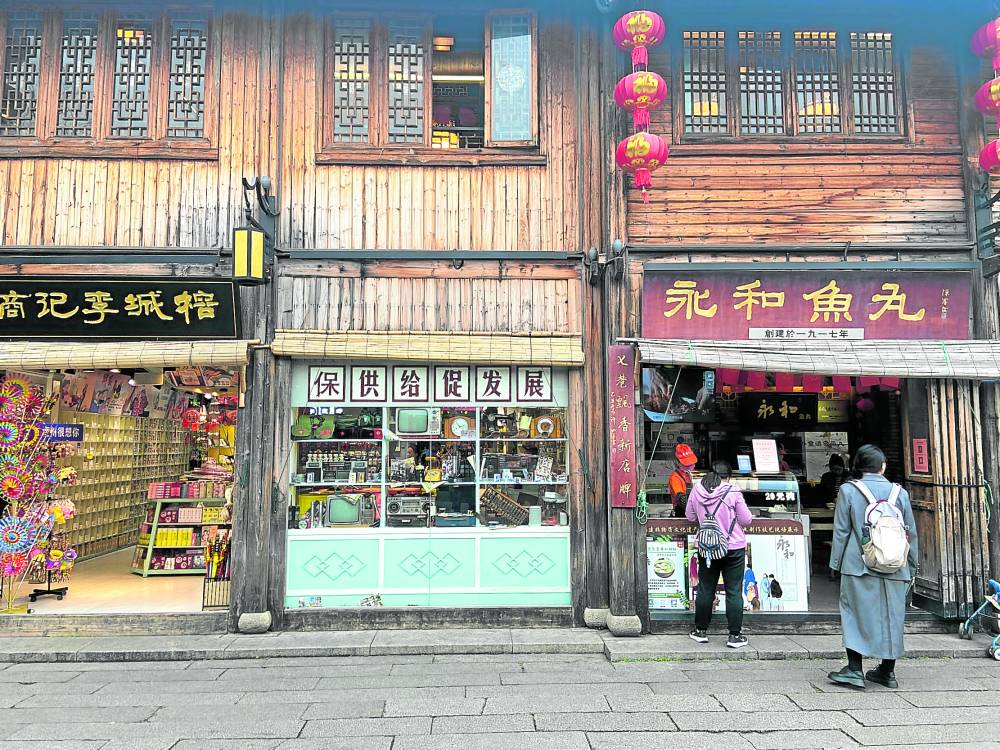
LIVING FOSSIL Three Lanes and Seven Alleys in Fuzhuo was once a residential block where intellectuals, politicians and anyone of importance lived Photos by Ira Pedrasa.
What do national hero Jose Rizal, former President Corazon Aquino, Miss Universe 2023 top 10 placer Michelle Dee and the Philippines’ Christmas icon Jose Mari Chan have in common?
They, alongside countless business tycoons like the Sys and Gokongweis (whose companies make up a big chunk of the Philippine economy) and of course, pancit canton, trace their ancestral roots to Fujian province, located on the southeastern coast of China and just two hours away by plane from Manila.
Long before the Spanish and the Americans conquered the Philippines, migration and trade have already linked the country and China, with Fujian standing front and center. Porcelain, silk and various spices made their way to the Philippines via the Manila Galleon trade starting at Quanzhou, a crucial hub in the ancient Maritime Silk Road.
Per a quick history from Wilson Flores, Federation of Filipino Chinese Chambers of Commerce and Industry, Inc. (FFCCCII) board member, the wave of Chinese migration, which began in the 19th century, was triggered by the “corrupt and bad governance of the late Qing Dynasty, combined with Western and Japanese colonial wars and Opium Wars, causing the once rich Chinese empire to suffer economically.”
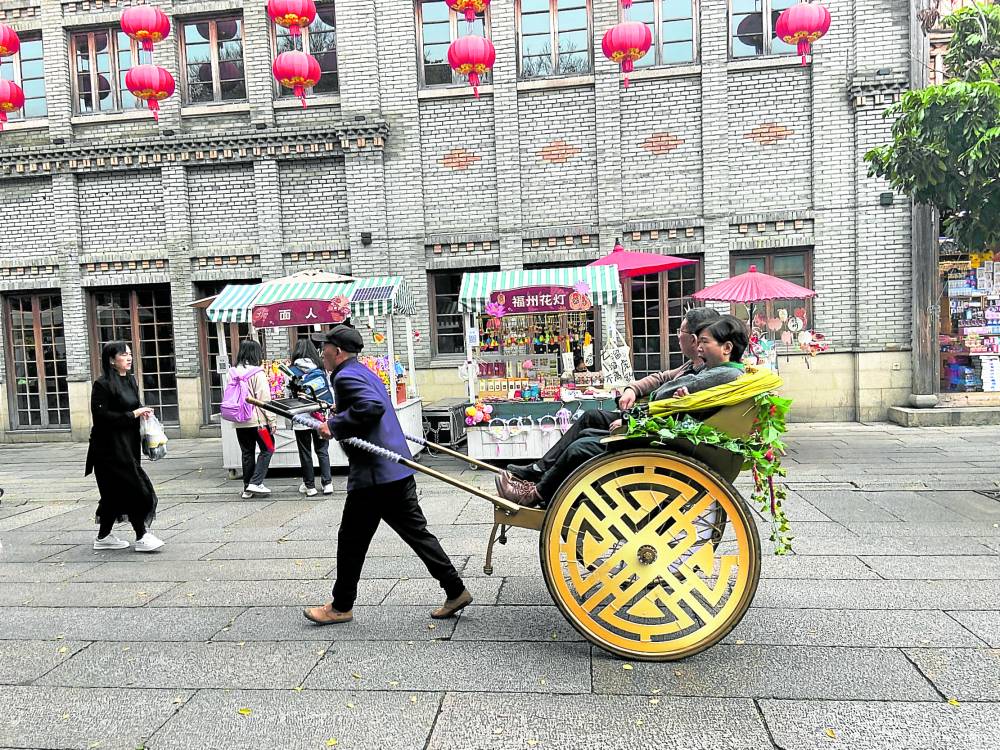
LIVING FOSSIL Three Lanes and Seven Alleys in Fuzhuo was once a residential block where intellectuals, politicians and anyone of importance lived Photos by Ira Pedrasa.
Geographical proximity lured a number of ethnic Chinese from Fujian to cross the seas and settle in the Philippines. Quoting the “Christmas in Our Hearts” singer, whose late father was sugar tycoon Antonio Chan, Flores says they were “the first overseas workers.”
Article continues after this advertisementFlores, who acquired and restored the 85-year-old Kamuning Bakery, says his own forebears were from Fujian.
Article continues after this advertisementElephant in the room
Against this backdrop, the FFCCCII hosted a three-city familiarization trip in Fujian for a number of journalists that began in Xiamen early this month. Indeed, the conflict raging over the West Philippine Sea was not lost on anyone, including this author, but calmed by an almost familiar setting replete with Filipino culture and traditions—that, perhaps, showcase that there are no distinctions to be set aside.
“Fujian people have been having business with the Philippines since more than a thousand years ago. They know our country and they have had intermarriages with our people, so that they are more comfortable with us,” says George Chua Cham, FFCCCII government liaison committee chair, whose ancestors also hail from the China province.
“It seems these controversial border disputes came about only in modern times, especially with the onset of colonialism. In the past, fisherfolk, traders and seafarers of all nations interacted with each other without passports, with the vast expanse of the sea actually uniting them in camaraderie, kinship and brotherhood,” adds Flores.
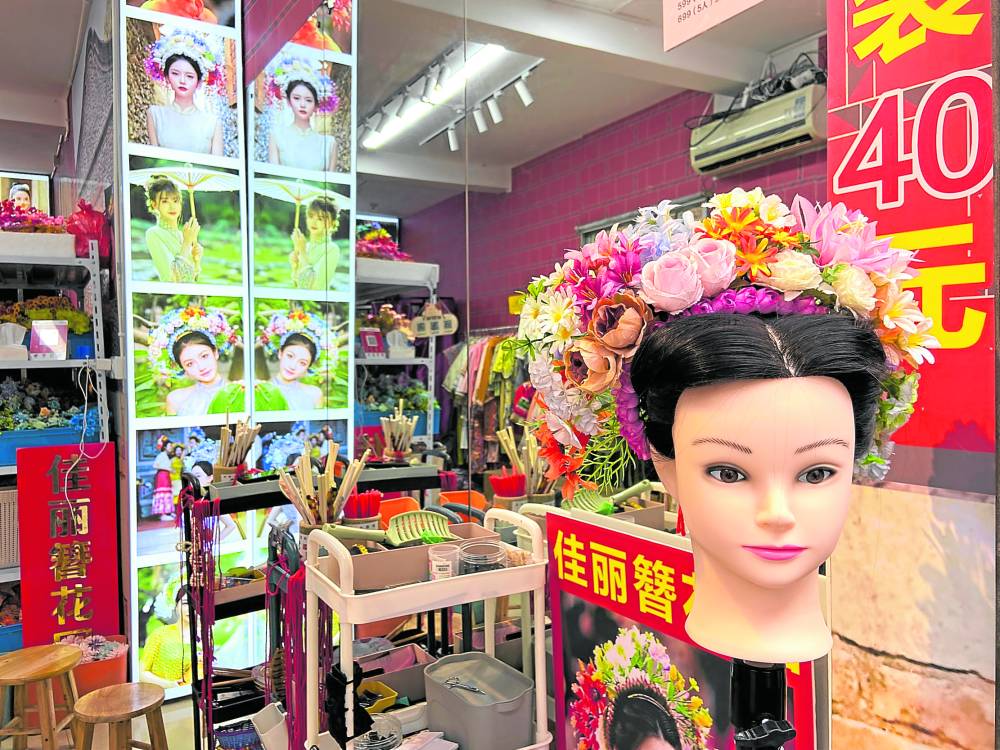
CROWNING GLORY A tiny shop near Kaiyuan Temple in Quanzhou offers traditional wear for rent, including this headpiece, to tourists. The belief is that when one wears a floral crown, called Zanhuawei, “in this life, you’ll also be pretty in the afterlife.”
From Xiamen airport, a mall with an all-too-familiar logo of the SM group greets guests upon their entry into the city. Manicured gardens and parks are found in every corner, as a major highway provides unobstructed view of the sea, a la Manila Bay.
In early December, temperature usually drops to the mid-teens—just the right formula for a long walk for those accustomed to the tropics. Around the same time this year, Beijing had to endure its longest cold wave in modern history.
According to Fujian officials interviewed, aside from the weather, Filipinos will take a liking to the connectivity that the city and the province, in general, have to offer.
Interprovince, a bullet train will cut by more than half passengers’ travel time to Fuzhou, the provincial capital, to just over an hour. The CR Fuxing is only the third fastest train in the world, with the first two also belonging to China.
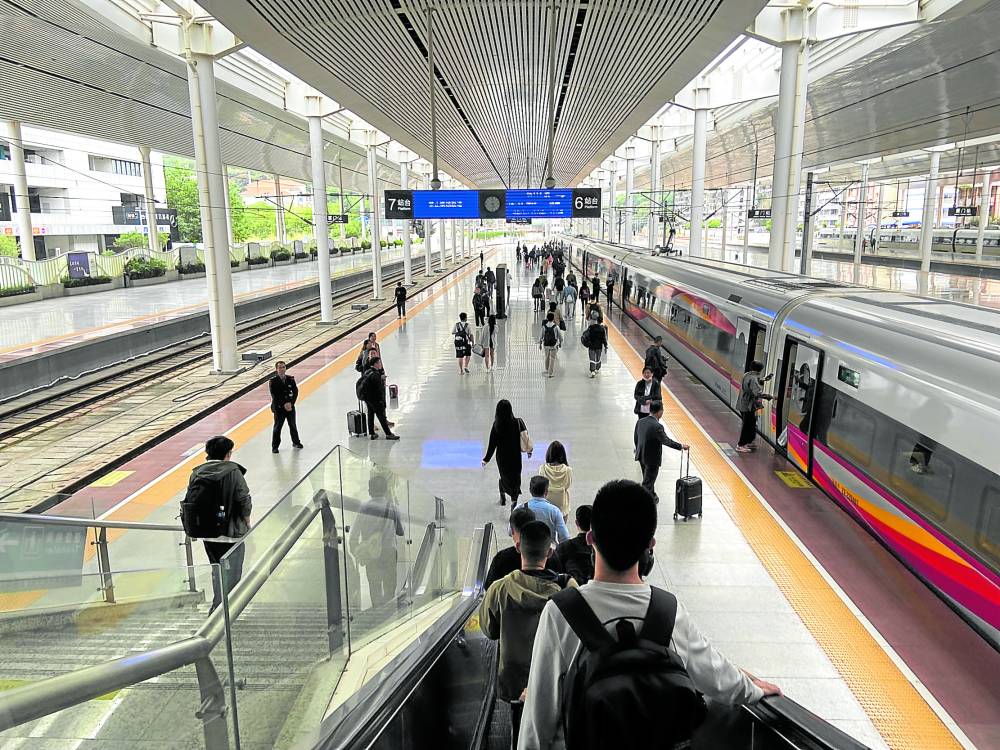
THIRD FASTEST TRAIN At a speed of 350 kilometers per hour, the CR Fuxing is just the third fastest in the world. The first and second spots also belong to China.
Running at a speed of 350 kilometers per hour, a seat by the window gives a spectacular—at times dizzying—alternate views of the sea, tree-lined mountains and buildings of various shapes and sizes. It’s a showcase of how the Fujian government would describe its advantage over the more popular cities of China: the province offers “marine culture, ecological civilization and multiculturalism.”A crisscross of modern and ancient
Aside from the rich cuisine—think oyster omelette, spring rolls, fish balls and an array of soup varieties (including ‘Buddha Jumps Over the Wall,’ a collagen-filled soup of abalone, sea cucumber and various meats so-called because even Buddha would be tempted to splurge on it)—on offer, Fujian also provides an ancient vibe that can easily comingle with the modern.
SanFangQiXiang, or the Three Lanes and Seven Alleys in Fuzhou, is an Instagram-ready residential block regarded by scholars as a “living fossil of ancient city street system.” Once an area that housed intellectuals and officials of important standing in the Ming and Qing dynasties, it is now a major tourist spot with a side street offering various curios and food.
A stone’s throw away is Lin Zexu Memorial, a mix of temple and museum in remembrance of China’s anti-opium hero, whose policies precipitated the Opium War and continued to inspire modern China’s endeavors in the narcotics war.
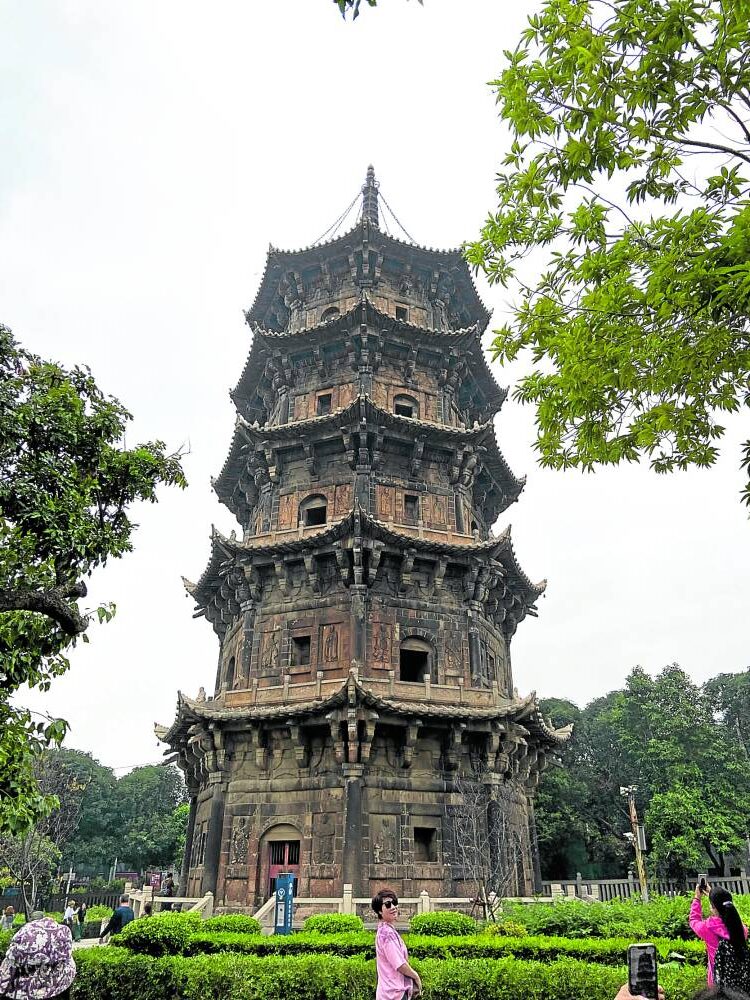
NOT TIRESOME One of two five-story pagodas that flank Kai- yuan Temple in Quanzhou, a crucial port on the ancient Mari- time Silk Road, where various beliefs and religions flourished.
A consistent theme in China’s history is perhaps the pride that its peoples have grown to evolve with in response to subjugation and humiliation over the centuries.
Not only in Fujian, Luckin outlets are now scattered across China. It was the country’s response to the dominance of Starbucks, which currently numbers around 6,000 versus the homegrown coffee brand’s 10,000 branches.
In Quanzhou, which is two hours by bus from Fuzhou, a museum houses the 32-year-old history of Anta, the country’s biggest sportswear company and the world’s third largest in terms of market capitalization (next only to Nike and Adidas). Founded in Fujian, Anta has gained popularity in recent years after signing up big names in world sports while tapping a burgeoning predilection among the young for anything homegrown rooted in national pride.
PH hero in China
“Multiculturalism” is another big theme in Fujian’s tourism banner.
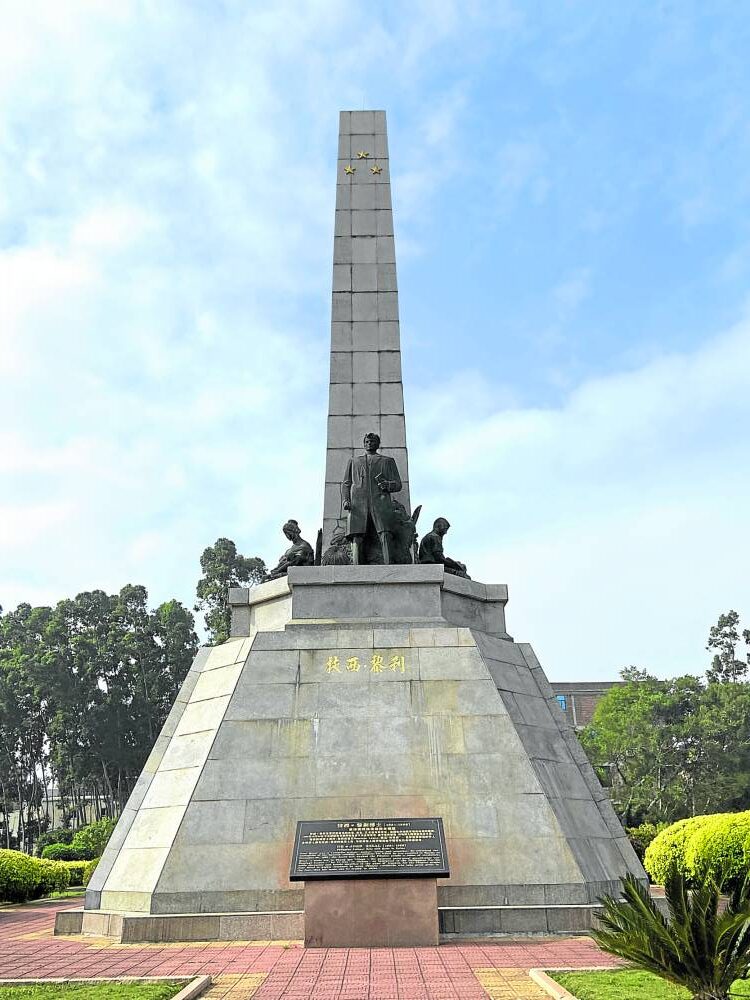
NOT LUNETA The tallest Rizal monument, at 18.61 meters representing the Philippine hero’s birth year, can be found in Jinjiang, Quanzhou.
Where else is this most reflected than in Quanzhou, one of the most important ports in the Maritime Silk Road, a sea route that modern China wants to revisit through its Belt and Road Initiative.
Wowing the likes of explorers Marco Polo and Ibn Battuta, Quanzhou was an important trading hub that allowed various religions and beliefs to flourish.
Even FFCCCII’s Cham could only quip they had no concept of racism and discrimination in those days. A tombstone unearthed in recent years showed Buddha with angel wings and a mix of other religious elements, such as Hinduism surrounding it. Meanwhile, in the middle of the city is a 1,000-year-old mosque built for Muslim traders and not far from it is the Taoist temple, Guandi.
Filipinos will also do a double take when they visit Rizal Park in Zhangguo village also in Quanzhou for its similarities to the one in Manila. The Fujian monument commemorates the Philippine hero while acknowledging his Chinese connection. Rizal’s great-grandfather was Domingo Lam-co (Chinese name: Ke Yinan) who adopted the surname Mercado.
A case for Mandarin
Back in Fuzhou, about 50 Filipino students and teachers are studying Mandarin at 116-year-old Fujian Normal University. Some have been living in China for a couple of years now and are supported by the FFCCCII.
Lindsey Reyes, who hails from Bataan, believes studying the language will be a big advantage when she graduates. “Knowing a foreign language is an advantage, what more if it’s Mandarin?”Reyes and her companions say the language will make Filipinos more competitive in an increasingly globalized world. Knowledge of the language also becomes an imperative with China’s growing impact across economies.
In the Philippines, teachers who can teach Mandarin are few and far between. While a campaign for the inclusion of Mandarin in the curriculum has yet to take root, students like Reyes will have to content themselves with scholarships that will allow them to “give back” to their mother country in the near future.
Adjusting in a foreign country like China was not difficult for Christian Dayson of Pampanga. He was more surprised that all his perceptions of China were shattered when he started studying there.
“Their personalities are not that different from Pinoys. Like us, they are very much willing when we need help,” he says.
As run-ins on disputed waters continue, so too must trade and cultural exchanges, according to Cham. Fujian today also remains a commercial center of trade for Filipino products such as durian, banana chips and other agricultural products.
Based on data from the Fujian government, exports to the Philippines grew 16 percent in 2021 to $10.43 billion, while imports increased almost 41 percent to $1.2 billion in the same year.
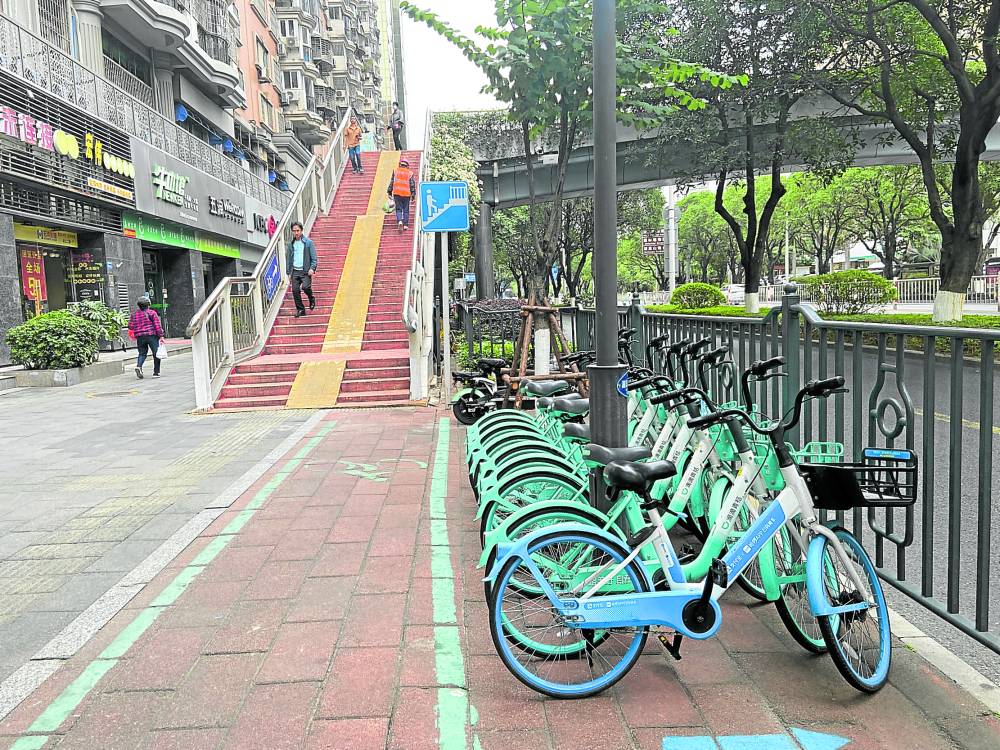
TRAFFIC-FREE Xiamen’s roads are free of heavy traffic even at peak hours due to pedestrian-friendly sidewalks and e-bikes scattered all over the city, ready for renting using e-wallets.
FFCCCII president Cecilio Pedro says it’s high time for a “reset” in Philippine-China relations in the direction of “more cooperation and dialogues.”
In a follow-up email correspondence with the Inquirer, the Fujian government says the dispute at sea is “rooted in the intersection of history, law and geopolitics, and there is currently no universally accepted solution.”
Noting that the Philippines is an important economic partner, Fujian also says: “People-to-people exchanges, trade and cultural relations are links between the two peoples and should be independent of political issues. Exchanges between the two cultures can also promote cultural diversity and the protection of cultural heritage. Exchanges and cooperation between the two peoples can promote mutual understanding and friendship, help ease political tensions, and provide a solid social foundation for the stability and development of bilateral relations.” INQ